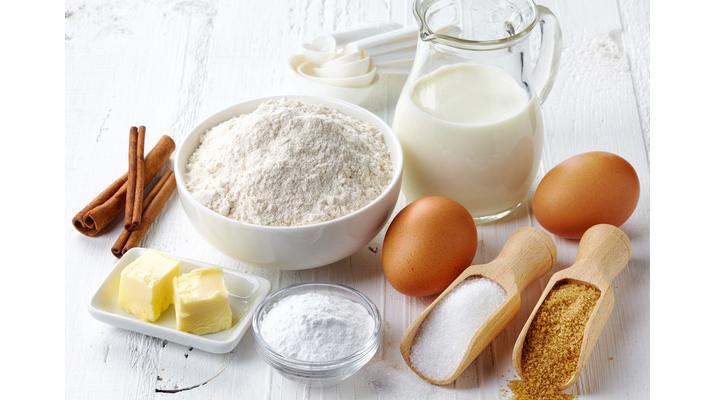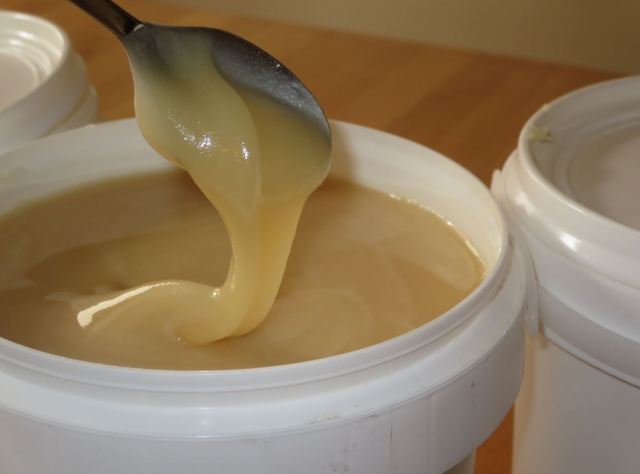When left to its own devices, raw honey will crystalize over time resulting in large crystals that feel gritty on the tongue. By controlling the crystallization process, you can create creamed honey with a smooth and spreadable consistency.
Start with a jar of liquid honey that is free of large, shard-like crystals. This will be your starting point for creating creamed honey.
Ingredients

The key ingredient to creamed honey is not the liquid honey itself, but rather a small amount of pre-creamed honey called seed. This helps to control the rate at which the honey crystallizes and prevents it from forming large, gritty granules that are unappetizing.
The’seed’ is made by heating the liquid raw honey to 140 F (60 C), which not only kills bacteria, but also breaks
down any large crystals that have already formed. The’seed’ is then mixed into the liquid honey at a ratio of
about 10 percent of the total volume.
Mix the mixture until it becomes light, creamy and spreadable. It is important not to stir too vigorously or
introduce too much air into the honey as this can alter its flavor and make it stiff. Once the creamed honey is
ready, it should be transferred into clean jars for storage. It may need to be stored in the refrigerator but it is
more commonly kept in the pantry since warm temperatures cause it to liquefy quickly.
Equipment

You will need a good quality, unheated honey to make creamed honey. This honey should have a high sugar content, and ideally be from a tree or shrub that crystalizes slowly. This honey will be easier to cream than those that crystalize rapidly, such as tupelo or clover honey.
Elton J. Dyce patented a method for creaming honey in 1935, and today most honey is made this way.
This process involves thoroughly combining finely granulated honey, called “seed” crystals, with raw liquid honey
in a ratio of one part seed to ten parts honey. The mixture is then stored at a cool temperature to encourage the
development of smaller, finer crystals than those that would develop naturally in the honey.
This creamed honey can be made at home using a stand mixer with wire whisks or a hand-held electric beater.
The whipped honey should be stored in a cool place, such as an unheated garage in Autumn, until it has set.
Preparation
After being removed from the beehive and exposed to the relatively warm environment of the house liquid honey will tend to crystalize into a more solid form that is no longer pourable. This crystallization does not spoil the honey nor change its flavor or elemental chemical composition.
To keep it in a more liquid state most beekeepers will “cream” their honey. The process of making creamed honey involves stirring the honey and adding small crystals, called seed crystals, into the honey to encourage more small crystals to form instead of large jagged ones. This creates a much smoother, spreadable honey than what you can get naturally from crystallized honey.
The original creaming method was patented by Elton J. Dyce in 1935. Most commercial beekeepers use the heated Dyce method but it is also possible to make creamed honey using the raw, no-heat, technique that most hobby beekeepers and family farmers prefer. Properly stored at cool temperatures, properly creamed honey can stay in its creamy state indefinitely.
Storage
When kept at a cool temperature creamed honey will last for long periods of time. However, like all honey, it will eventually revert back to liquid form and can ferment if the environment is warm enough. This can cause the honey to develop a musty flavor and smell. To prevent this a container should be tightly sealed.
Creamed honey is much easier to spread on toast or bagels than regular liquid honey and has a more robust flavor. It is also great for baking because it will not run off a knife like liquid honey.
It can be difficult to make creamed honey at home because it takes about a week of babysitting the honey and controlling the temperature to encourage crystallization. If you are not comfortable with making your own creamed honey, look for it at a local farmer’s market or contact your local bee farmers and ask them to produce some on a regular basis.










































